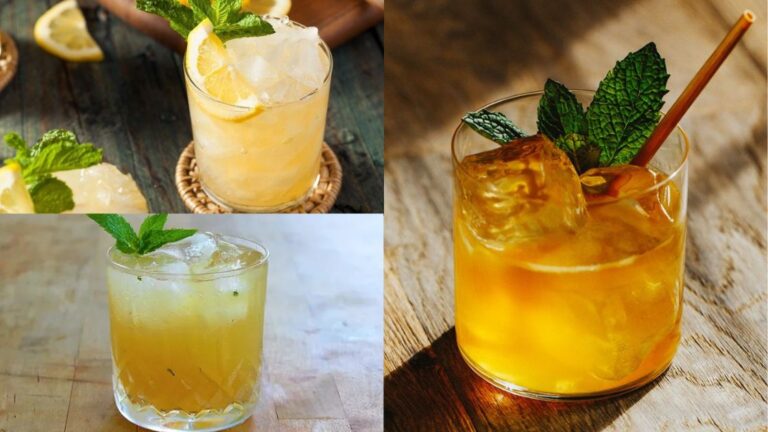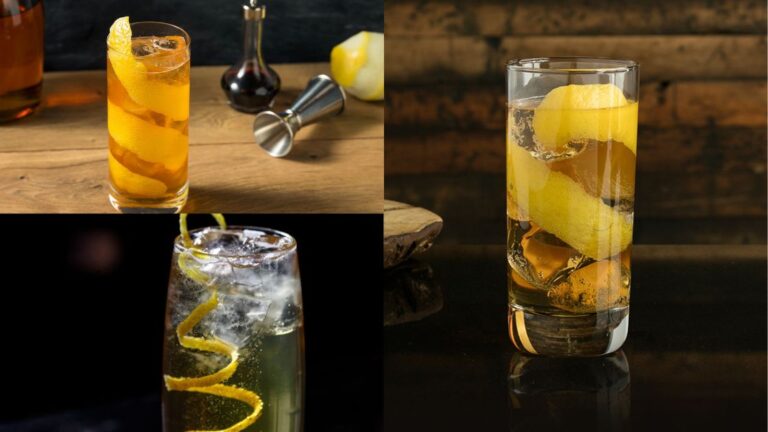Whiskey, often dubbed the “water of life,” is a distilled alcoholic beverage made primarily from fermented grain mash. The grains used include barley, corn, rye, and wheat. The practice of distilling fermented grains traces back hundreds of years, with the art of whiskey-making believed to have been first introduced by monks in ancient Ireland and Scotland. It was in these places that the whiskey we know and love today was first crafted, with the name itself stemming from the Gaelic term “uisce beatha,” meaning “water of life.”
In recent years, homemade whiskey has gained significant popularity among spirit enthusiasts worldwide. Not only does creating your own whiskey provide a sense of achievement and personal satisfaction, but it also allows you to tailor the final product to your taste. Moreover, homemade whiskey gives you a deeper understanding and appreciation of the intricate process behind the complex spirit, enhancing your overall whiskey tasting experience.
The process of making whiskey can be both an art and a science, involving several crucial steps: mashing, fermentation, distillation, aging, and bottling. Mashing involves soaking the grains in hot water to extract their sugars. The resulting liquid, known as wort, is then allowed to ferment, with yeast converting the sugars into alcohol to create a brew known as the “wash.” The wash is distilled to increase its alcohol content and purify it. After distillation, the spirit is aged in wooden barrels, usually charred oak, which contributes significantly to the whiskey’s color, flavor, and aroma. Finally, the matured whiskey is bottled, and voila – you have your own homemade whiskey. This guide will walk you through each step-in detail, making the complex process of whiskey-making accessible to anyone who wants to give it a try.
Understanding the Ingredients
Detailing the Primary Ingredients: Water, Grain, and Yeast
The three fundamental ingredients in whiskey production are water, grain, and yeast. Each plays a vital role in the overall taste and quality of the final product.
- Water: Water is essential in multiple stages of whiskey production. It’s used in the mashing process to extract sugars from the grains, in fermentation as part of the yeast’s medium, and it’s also used to dilute the distilled whiskey to the desired strength.
- Grain: Grains form the core of whiskey. They provide the sugars that are required for fermentation, and they significantly impact the flavor of the end product. Different grains yield different types of whiskeys, and the primary ones used are barley, corn, rye, and wheat.
- Yeast: Yeast is a microorganism that consumes the sugars derived from grains and produces alcohol and carbon dioxide in a process called fermentation. Different strains of yeast can influence the taste and aroma of the whiskey, adding complexity to the final product.
Discussing the Types of Grains and Their Effects on Flavor
The type of grain used in whiskey production significantly affects its flavor.
- Barley: Predominantly used in Scotch and Irish whiskey, barley, especially when malted, imparts a rich, toasty flavor to the whiskey.
- Corn: Corn-based whiskeys, like bourbon, are typically sweeter and fuller-bodied. Corn provides a sweet, mellow flavor profile.
- Rye: Rye whiskey has a spicier and fruitier profile. It’s known for its robust and spicy character, bringing complexity to whiskey blends.
- Wheat: Wheat provides a softer, gentler flavor to whiskey. Wheat whiskeys are generally smooth and mildly sweet, with a lighter body.
Importance of Water Quality in Whiskey Production
Water is a crucial ingredient in the whiskey-making process, and its quality significantly influences the final product. High-quality water is required for mashing to extract sugars, in fermentation to support yeast activity, and in dilution after distillation to bring the spirit to drinking strength. Mineral content in water also contributes to flavor nuances in the whiskey. Consequently, it’s essential to use clean, pure water, free from impurities and additives, which might interfere with the process or the taste of your whiskey. If possible, using spring water or well-filtered water is a good practice for home distillers.
Equipment Needed
Overview of Necessary Equipment for Home Distilling
Making whiskey at home requires specific equipment to ensure the process is safe, efficient, and yields the desired end product. Here’s a general list of the equipment needed:
- Grain Mill: A grain mill is used to crush the grains, preparing them for the mashing process.
- Mash Tun: This is a vessel used to mix the grains with hot water and extract the sugars.
- Fermenter: This is a large container, often fitted with an airlock, used to hold the wort while yeast ferments it into alcohol.
- Still: A still is used to distill the fermented mixture, separating the alcohol and concentrating it into a spirit.
- Thermometer: Thermometers are necessary to monitor temperatures during mashing and distillation.
- Hydrometer: A hydrometer is used to measure the specific gravity of the wort and the wash, helping determine the alcohol content.
- Aging Barrels: Aging barrels, typically made of charred oak, are used to age and mature the distilled spirit.
- Bottles, Corks/Caps, and Labels: These are needed to store and identify the final product.
Details and Specifications for a Home Still
The distillation process requires a still, an apparatus that heats the fermented wash, captures the alcohol vapors, and condenses them into liquid. Home stills come in different sizes and types:
- Pot Still: The simplest type of still, it consists of a pot to hold the wash, a lid or cap to capture vapor, and a condenser to cool the vapor back into liquid form. It’s perfect for whiskey as it doesn’t strip all the flavors from the wash, maintaining the character of the grain.
- Column/Reflux Still: A more complex type of still, it has a column between the pot and the condenser. The column is filled with packing material that causes the vapor to condense and re-vaporize multiple times before reaching the condenser. This results in a purer, higher-alcohol spirit, but it also strips out more flavor.
- Size: The size of the still will depend on how much whiskey you plan to make. For home use, a still with a capacity of 1-5 gallons is usually sufficient.
Safety Precautions and Legalities Related to Home Distillation
Safety should be your top priority when distilling at home:
- Always monitor the distillation process: Alcohol vapor is highly flammable. Never leave a running still unattended, and ensure it’s used in a well-ventilated, fire-safe area, away from open flames and sparks.
- Use safe, quality equipment: Poorly constructed stills can leak vapor, create pressure buildup, or contain materials that aren’t safe for use with consumable alcohol.
- Dispose of waste responsibly: Spent grains, leftover wash, and “heads” and “tails” from the distillation process should be disposed of responsibly.
- Drink responsibly: Distilled spirits are high in alcohol content. Consume responsibly and be aware of the risks and effects of alcohol consumption.
In terms of legality, home distillation laws vary widely around the world and within the United States. As of my knowledge cutoff in September 2021, in the U.S., home distillation for personal consumption without a federal license is illegal. Always check the laws in your local area before beginning home distillation.
The Whiskey-Making Process
Mashing: Explaining the Process, the Purpose, and Step-by-Step Instructions
Mashing is the first stage in the whiskey-making process. Its purpose is to convert the starches in the grains into fermentable sugars.
Process Explanation: Mashing involves soaking the grains in hot water. This process breaks down the complex carbohydrates in the grain into simpler sugars. The water temperature is crucial and is typically maintained between 145°F and 155°F, which is the optimal range for enzymes in the malted barley to break down starches into sugars.
Step-by-Step Instructions:
- Grind the Grains: Begin by grinding your chosen grains into a coarse meal, known as grist. A mill can help you achieve the right consistency.
- Heat the Water: Heat water in your mash tun (brewing vessel) to around 165°F.
- Add the Grains: Slowly add your grist to the hot water, stirring continuously to avoid clumps. This mixture of grain and water is known as mash.
- Maintain the Temperature: After all the grains are added, the temperature should naturally settle to around 150°F. It’s essential to maintain this temperature for about 1-2 hours to allow enzymes to convert the starches into sugars.
- Separate the Liquid: After mashing, the liquid, now called the wort, is separated from the grain husks. The wort contains the sugars needed for fermentation.
Fermentation: Explanation, Purpose, and How-to Guide
Fermentation is the next step in whiskey production, where sugars are converted into alcohol by yeast.
Process Explanation: Fermentation begins when yeast is added to the cooled wort. Yeast consumes the sugars in the wort, producing alcohol, carbon dioxide, and heat. This process usually takes a few days, during which the mixture, now called a wash, starts to resemble a rudimentary beer.
Step-by-Step Instructions:
- Cool the Wort: After the wort is separated from the grain husks, it must be cooled to a temperature safe for the yeast, typically around 70°F.
- Transfer the Wort: The cooled wort should be transferred to a fermenter, often a large vat or container, which should be sanitized to avoid unwanted microbes interfering with the fermentation process.
- Add the Yeast: Once the wort has cooled to the desired temperature, add the yeast. Different strains of yeast can be used, each influencing the flavor and character of the final product.
- Allow Fermentation: The fermenter is then sealed, with an airlock allowing carbon dioxide to escape while preventing any outside air from entering. Fermentation typically takes about two weeks, during which the sugars in the wort are converted into alcohol.
- Monitor the Process: During fermentation, the wort will begin to froth and bubble as the yeast produces alcohol and carbon dioxide. This is a good sign that fermentation is occurring. After about two weeks, the bubbling will subside, indicating that fermentation is complete. You should now have a wash with an alcohol content of about 6-8%.
Distillation: Detailed Process, Its Role in Whiskey Making, and Step-by-Step Instructions
Distillation is a crucial step in the whiskey-making process. It separates alcohol from the fermented mixture and purifies it to create a clear, high-alcohol spirit.
Process Explanation: Distillation works on the principle that alcohol boils at a lower temperature than water. By heating the wash to the point where the alcohol evaporates but the water doesn’t, you can collect the alcohol vapors, condense them back into liquid form, and thereby increase the alcohol concentration.
Step-by-Step Instructions:
- Transfer the Wash: Pour the fermented wash into the still.
- Heat the Wash: Gradually heat the wash to the point of boiling, around 173°F, which is the boiling point of alcohol. As it heats, alcohol and other compounds will begin to vaporize.
- Collect the Distillate: The alcohol vapors will rise up through the column of the still and then condense back into a liquid in the condenser. This liquid, known as distillate or “new make spirit,” is collected in a separate container.
- Run the Second Distillation: Whiskey is typically distilled twice. The distillate from the first run, known as “low wines,” is returned to the still for a second distillation. This second distillation separates out more impurities and increases the alcohol content.
Aging: Discussing Why Aging is Essential, How It’s Done, and Instructions
Aging is the process where whiskey develops its unique flavor and character. It’s during this process that whiskey gains color, complexity, and smoothness.
Process Explanation: The distilled spirit is transferred to wooden barrels for aging. Over time, the spirit absorbs compounds from the wood, such as tannins and lignin, which impart flavor, color, and smoothness to the whiskey.
Step-by-Step Instructions:
- Prepare the Barrel: Select a suitable aging barrel, usually made of oak. The barrel should be charred on the inside to help the whiskey interact with the wood’s compounds.
- Fill the Barrel: Fill the barrel with the distilled spirit and seal it.
- Store Properly: Store the barrel in a cool, dark place with controlled humidity.
- Be Patient: Let the whiskey age. The aging period can vary from a few years to several decades, depending on the desired flavor profile. Note that the spirit will evaporate over time – this is known as the “Angel’s Share.”
Bottling: Guidance on How to Bottle the Final Product Properly
Bottling is the final step in whiskey-making, where the matured whiskey is prepared for consumption.
Process Explanation: After aging, whiskey may have a high alcohol content and might need dilution. It is then filtered to remove any unwanted particles, and finally, bottled.
Step-by-Step Instructions:
- Dilute the Whiskey: If needed, dilute the whiskey with distilled water to achieve the desired alcohol content. This is typically around 40-50% ABV for most whiskeys.
- Filter the Whiskey: Filter the whiskey to remove any wood particles or sediments.
- Bottle the Whiskey: Pour the whiskey into sterilized bottles, being careful not to spill.
- Seal the Bottles: Finally, seal the bottles. The whiskey is now ready to be stored, served, and enjoyed.
Variations in Whiskey Making
Discussion on Various Types of Whiskey: Scotch, Bourbon, Rye, etc.
Whiskey comes in various styles and types, each with unique characteristics and rules governing their production.
Scotch Whisky: Produced in Scotland, Scotch is typically aged in oak barrels for a minimum of three years. There are various types, including Single Malt (made from malted barley in one distillery), Blended (a mix of malt and grain whiskies), and Single Grain (made from grains other than barley).
Bourbon: This American whiskey must be made from at least 51% corn and aged in new charred oak barrels, with no minimum aging period, but to be called “straight” bourbon, it must be aged for at least two years.
Rye Whiskey: There are American and Canadian versions of Rye whiskey. American Rye must be made from at least 51% rye grain, while Canadian Rye Whisky often includes a blend of grains, with rye usually being a smaller component.
Irish Whiskey: Typically, triple distilled for smoothness and aged for a minimum of three years in wood, Irish whiskey can be made from malted and unmalted barley in pot stills.
Highlighting the Differences in the Process and Ingredients for Each Type
Each type of whiskey has its unique production process and ingredients that distinguish its flavor profile:
Scotch Whisky: Malted barley is the primary grain used in Scotch. The process may include drying the malted barley over peat smoke, which gives some Scotch whiskies their distinctive smoky flavor. Scotch is typically distilled twice in pot stills.
Bourbon: The use of a minimum of 51% corn gives bourbon its sweet and full-bodied flavor. After distillation, it’s aged in new, charred oak barrels, which gives it caramel and vanilla notes. The use of new barrels for each batch also distinguishes it from other types.
Rye Whiskey: American rye whiskey, made with at least 51% rye grain, has a spicier and robust character compared to bourbon. Canadian rye whisky may not always contain a high percentage of rye grain but is often blended for a smooth and light flavor.
Irish Whiskey: Distilled three times and typically made from a mix of malted and unmalted barley, Irish whiskey is known for its smooth and light flavor profile. The triple distillation process makes it smoother and lighter than many other types of whiskey.
Tasting and Appreciation
Tips on How to Taste and Appreciate Homemade Whiskey
Enjoying whiskey involves more than just drinking it; a proper appreciation involves all the senses. Here are some tips for tasting and appreciating your homemade whiskey:
- Visual Assessment: Look at the color, which can tell you a lot about whiskey. A darker color generally indicates a longer aging period. Also, observe its viscosity by gently swirling it in the glass and watching the ‘legs’ or ‘tears’ trickle down the sides.
- Nosing: Smell the whiskey before you taste it. A large part of our sense of taste comes from our sense of smell. Try to identify the different aroma notes. Do you get hints of vanilla, oak, fruits, or maybe even a smoky scent?
- Tasting: Take a small sip and let it coat your mouth. Try to identify the different flavors. Is it sweet, bitter, or spicy? Can you taste the grains used or the character of the barrel it was aged in?
- Finish: This is the taste that lingers after swallowing. A good whiskey often has a long and pleasing finish.
- Adding Water: You may choose to add a few drops of water to your whiskey. This can open up the flavors and make it easier to taste the different notes, especially in high-proof whiskeys.
Pairing Homemade Whiskey with Food
Pairing whiskey with food can enhance the flavors of both. Here are some food pairing suggestions for your homemade whiskey:
Cheese: Cheese and whiskey can pair exceptionally well. Strong, hard cheeses can stand up to bold, flavorful whiskeys, while creamy cheeses can complement smoother, lighter whiskeys.
Chocolate: Dark chocolate and whiskey are a classic pairing. The bitterness of the chocolate can highlight the sweetness of the whiskey.
Meat: Smoky or barbecued meats can complement a wide range of whiskey flavors.
Nuts and Dried Fruits: These can highlight the fruity and nutty notes in many whiskeys.
Remember, pairing is subjective and what works best is what you enjoy the most. Feel free to experiment and discover your favorite combinations.
Troubleshooting Common Issues
Identifying Common Problems in Homemade Whiskey Production
While whiskey-making is an art form, it is not without its potential issues. Here are some common problems encountered in homemade whiskey production:
- Incomplete Fermentation: This can occur if the mash doesn’t fully ferment, often due to incorrect temperatures or issues with the yeast.
- Low Alcohol Content: This problem could stem from inefficient distillation or fermentation issues.
- Off-flavors or Aromas: These can result from a variety of factors, including problems during fermentation, improper distillation, or issues with the aging process.
- Cloudiness in the Final Product: A clear spirit is typically the goal, but cloudiness can occur, usually due to temperature changes or impurities.
Solutions and Advice on How to Resolve These Issues
- Incomplete Fermentation: Make sure the mash is kept at the correct temperature for the yeast. If the fermentation still doesn’t proceed, you might need to repitch the yeast.
- Low Alcohol Content: Ensure you’ve added enough yeast and sugar during the fermentation process. During distillation, make sure the wash is heated to the right temperature range to evaporate the alcohol.
- Off-flavors or Aromas: Ensure your fermentation process is clean and at the correct temperature. In distillation, make sure to separate the “heads” and “tails” as they contain compounds that can create off-flavors. For aging, ensure your barrels are properly cleaned and stored in the right conditions.
- Cloudiness in the Final Product: This can often be solved by filtering the whiskey before bottling. Cloudiness due to temperature changes (known as “chill haze”) is a common occurrence in non-chill filtered whiskeys and isn’t a sign of poor quality.
Remember that making whiskey is a learning process and occasional issues are part of that journey. Each batch is an opportunity to refine your techniques and produce a better product.
Conclusion
Whiskey making is an art that combines science, patience, and creativity. You’ve learned about the primary ingredients of whiskey: water, grain, and yeast, and the essential equipment needed for home distilling. You’ve delved into the whiskey-making process, starting from mashing, fermentation, and distillation, through to aging and bottling. We’ve explored the different styles of whiskey, from Scotch and Bourbon to Rye and Irish, and how their unique characteristics arise from variations in ingredients and process. We’ve also covered how to appreciate and pair whiskey, troubleshoot common issues, and consider legal aspects of home distilling.
Don’t forget, the real thrill in crafting your own whiskey isn’t just about the end result. It’s about embracing the journey itself. There’s the thrill of discovering new things, trying out different techniques, and the sense of pride in creating something unique with your own two hands. Yes, you might encounter some bumps in the road, but don’t let them get you down. Each batch you create adds to your experience and understanding, paving the way for even more delicious whiskey in the future.
As you venture into the world of homemade whiskey, remember to enjoy each step, from the mash’s first stir to the first sip of your carefully aged spirit. It’s a labor of love, a test of patience, and, most importantly, a celebration of tradition and craft. Savor your accomplishments, share them if you’re so inclined, and raise a glass to the fruits of your labor. Here’s to your journey into the art of whiskey making! Cheers!





